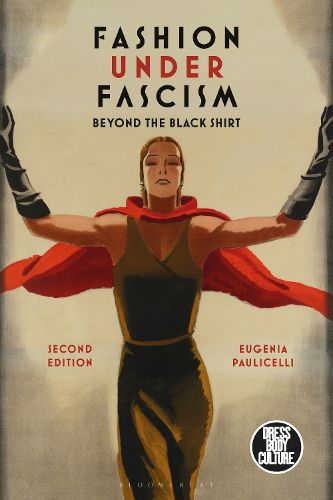Readings Newsletter
Become a Readings Member to make your shopping experience even easier.
Sign in or sign up for free!
You’re not far away from qualifying for FREE standard shipping within Australia
You’ve qualified for FREE standard shipping within Australia
The cart is loading…






Looking at the dark history of Italian fashion by focusing on the impact of 1930s Fascism, this is the second edition of Eugenia Paulicelli's classic text.
In Fashion under Fascism, Paulicelli explores the subtle yet sinister changes to the seemingly innocuous practices of everyday dress and shows why they were such a concern for the state. Importantly, she also demonstrates how these developments impacted on the global dominance of Italian fashion today. Alongside interviews with major designers, such as Fernanda Gattinoni and Micol Fontana, this newly expanded revised edition includes updated material on gender and masculinity, the role of uniforms in standardizing individuality, race and colonial Italy, and the reception of 1930s cinema. It sheds new light on the complicated relationship between style and politics and is an essential read for all those interested in the history of fashion, politics, national identity and the culture of fascism.
$9.00 standard shipping within Australia
FREE standard shipping within Australia for orders over $100.00
Express & International shipping calculated at checkout
Looking at the dark history of Italian fashion by focusing on the impact of 1930s Fascism, this is the second edition of Eugenia Paulicelli's classic text.
In Fashion under Fascism, Paulicelli explores the subtle yet sinister changes to the seemingly innocuous practices of everyday dress and shows why they were such a concern for the state. Importantly, she also demonstrates how these developments impacted on the global dominance of Italian fashion today. Alongside interviews with major designers, such as Fernanda Gattinoni and Micol Fontana, this newly expanded revised edition includes updated material on gender and masculinity, the role of uniforms in standardizing individuality, race and colonial Italy, and the reception of 1930s cinema. It sheds new light on the complicated relationship between style and politics and is an essential read for all those interested in the history of fashion, politics, national identity and the culture of fascism.